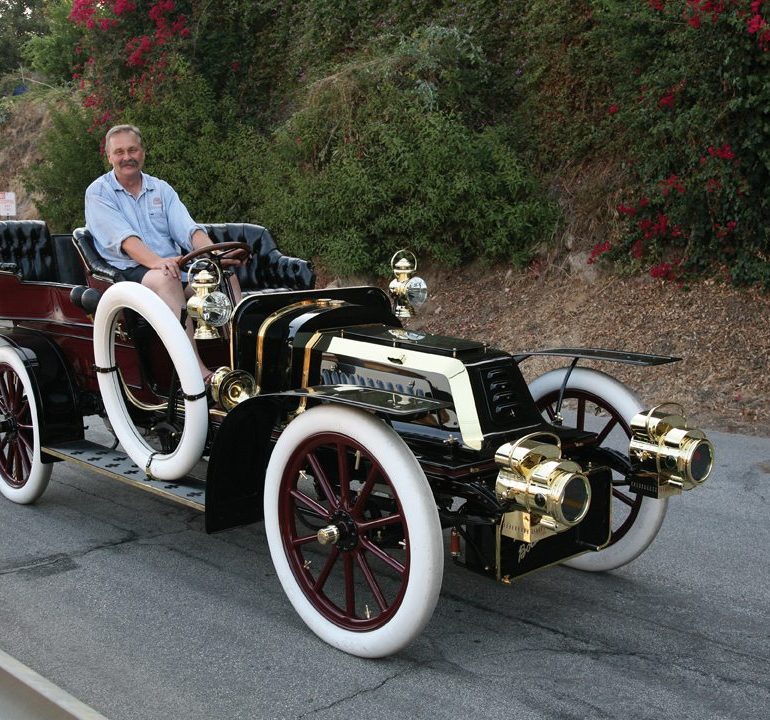1904 De Dion Bouton
We carefully lift the coalscuttle hood off of the 1904 De Dion Bouton Henri Binder Tonneau 15 touring car and put a few drops of gasoline into each of the priming cups on the engine’s four cylinders. Chris Kidd, who owns Tired Iron restorations in Monrovia, California, then comes back around, retards the spark, opens the fuel tank valve, and sets the throttle to fast idle. He shoots a spritz of starter fluid into the updraft carburetor and opens the little priming cups, then he cranks the engine, being careful not to wrap his fingers around the crank or get his arm behind it in case the engine fires too early and slams the crank back. After a gentle tug to get one piston coming up on its ignition stroke, he pops the crank. Nothing happens.



